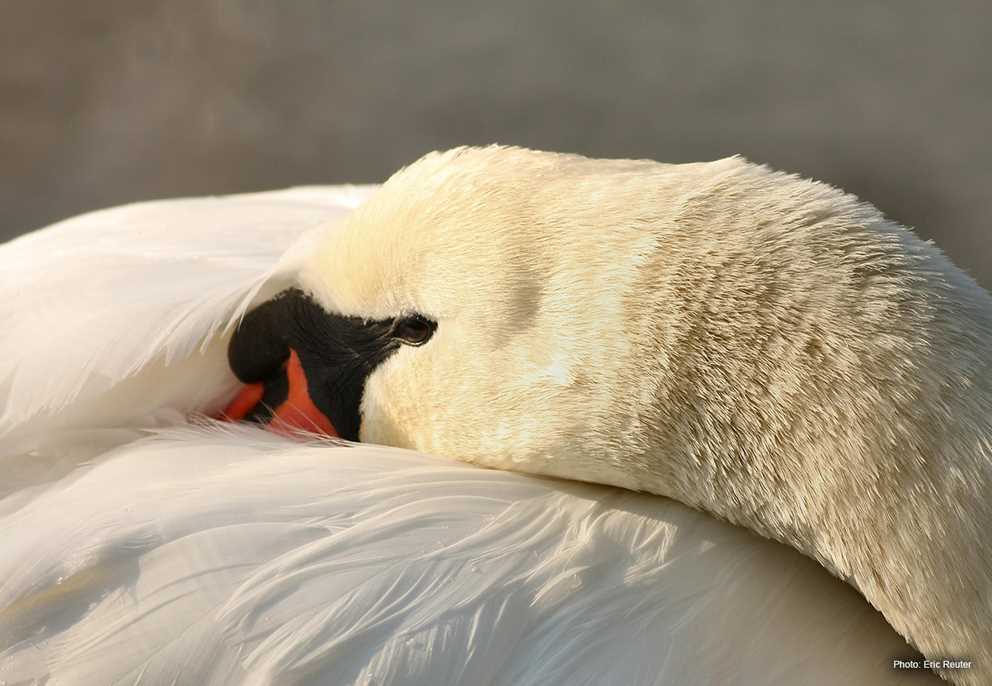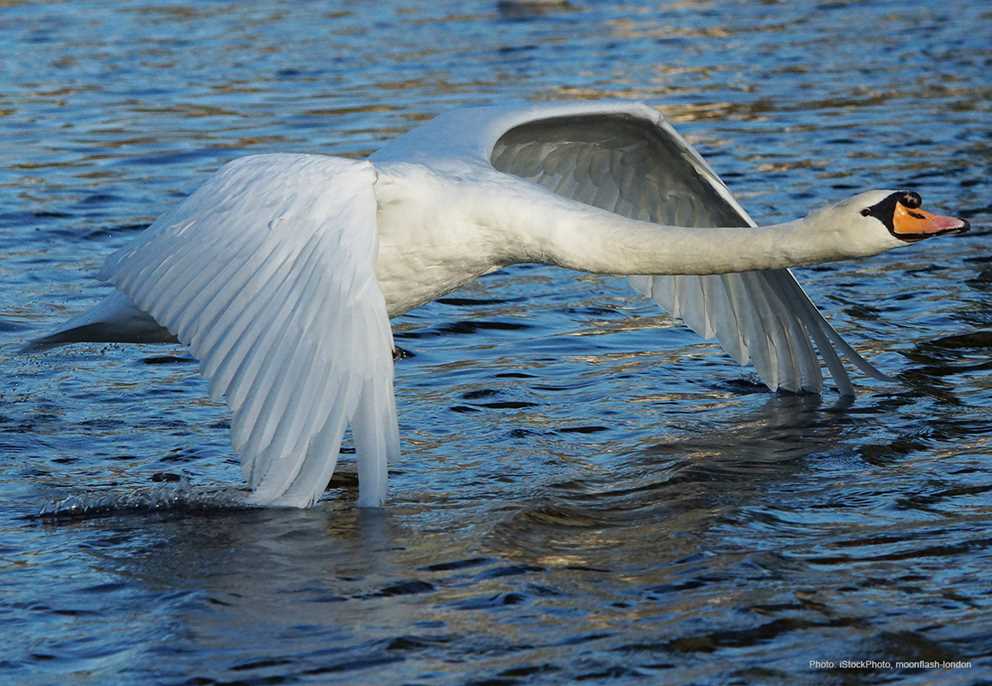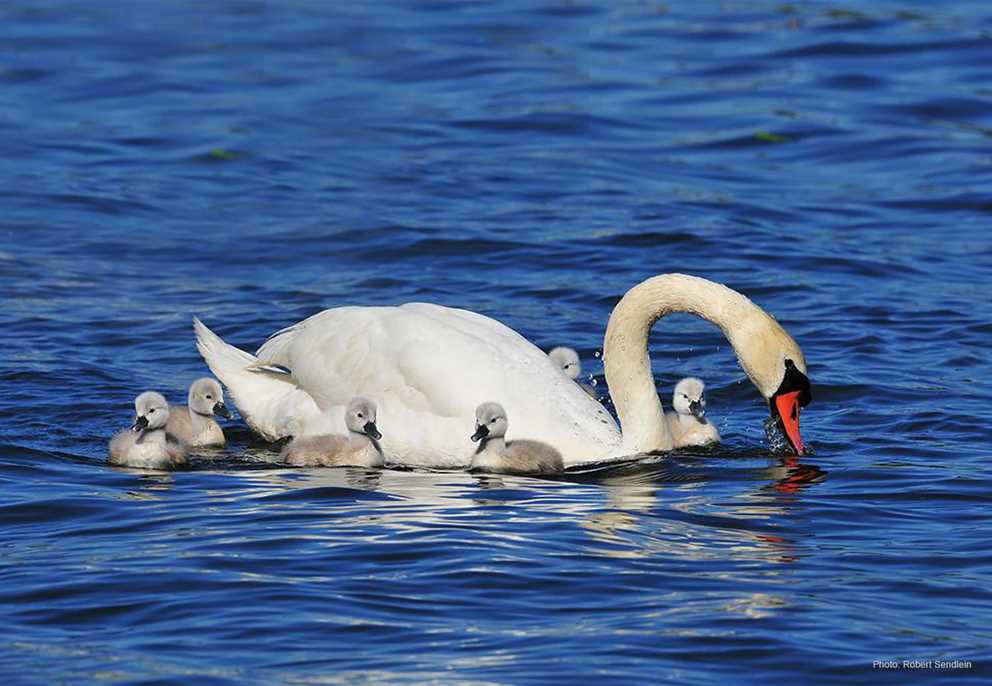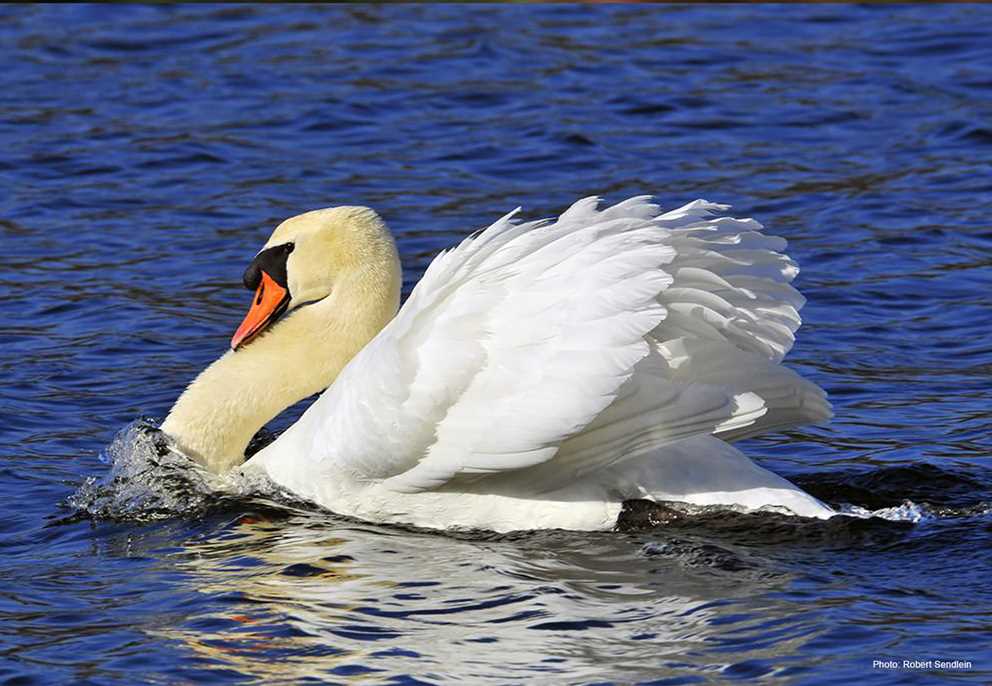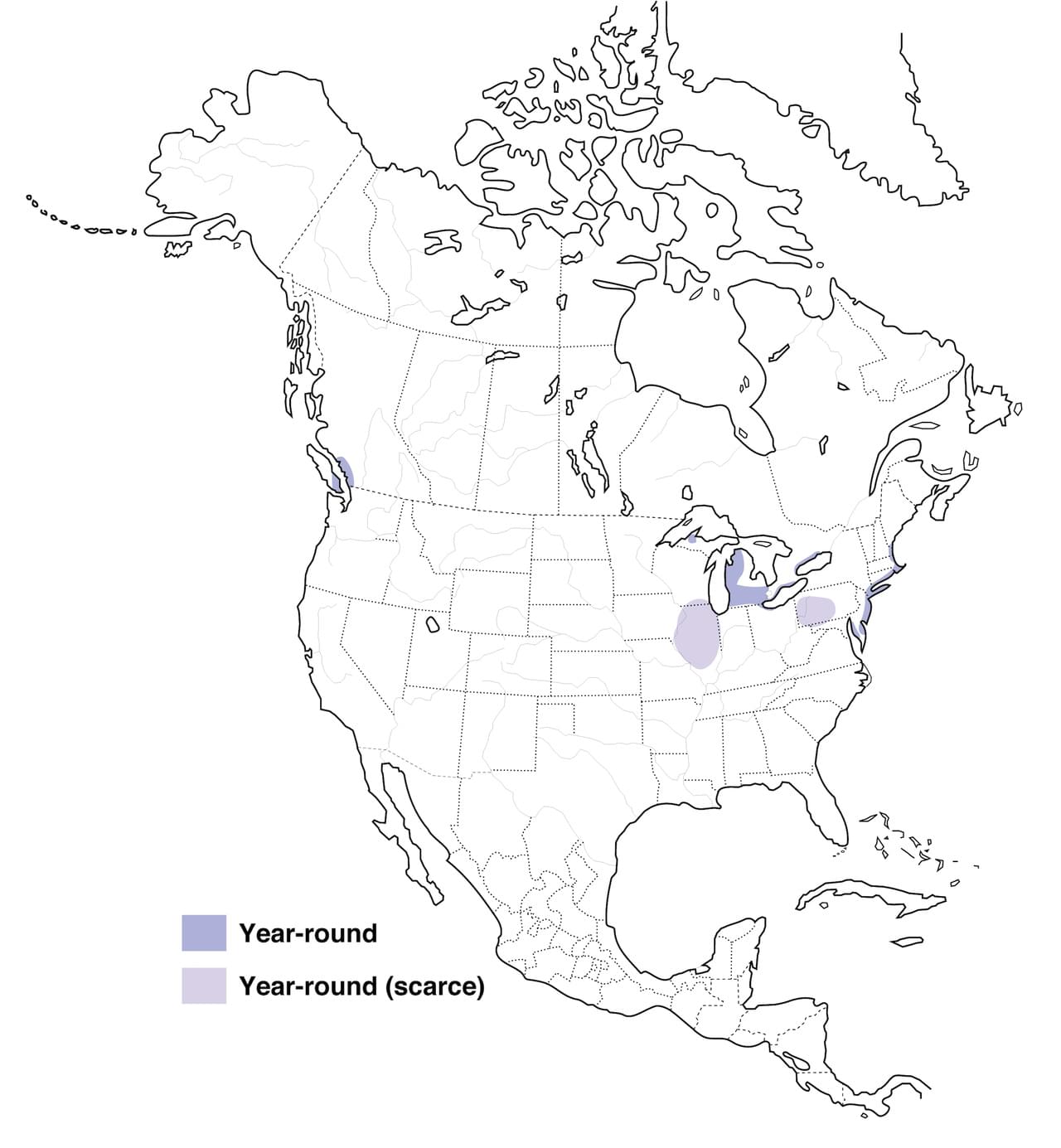Breeding
Mute swans are extremely territorial and return to their birth locations to nest and breed. They are monogomous and create large nests where 5-6 eggs are laid.
Latin: Cygnus olor
Average wingspan: M 7.9", F 7.3"
Average weight: M 23.8 lbs., F 17.4 lbs.
Description
Originating in Eurasia, the Mute swan is currently an invasive species in North America due to multiple deliberate introductions. The species is very large with all white plumage and long necks. They are identifiable from other swans by black knobs at the base of their beaks. Mute swans have black feet and orange beaks. Juveniles can range from the typical white plumage to a grayish brown plumage. The grayish brown can also apply to their bill and feet while juveniles. Regardless of age, the Mute Swan is a very aggressive species and will attack native waterfowl as well as species as large as humans.
Food Habits
Mute swans are vegetarians eating almost 9 pounds of aquatic vegetation per day.
Population
While very small and isolated pockets of mute swans can be found on the Pacific Coast, the largest populations are found up and down the Atlantic Coast and in Michigan including the surrounding Great Lakes. The invasive mute swans are growing in population at a surprising rate of almost 10 percent per year causing more issues for native species each year.
Migration and Wintering
The mute swan is a non-migrating species staying within approximately 30 miles of their original birth place. During icy conditions the mute swan will travel to find open or free-flowing water.
